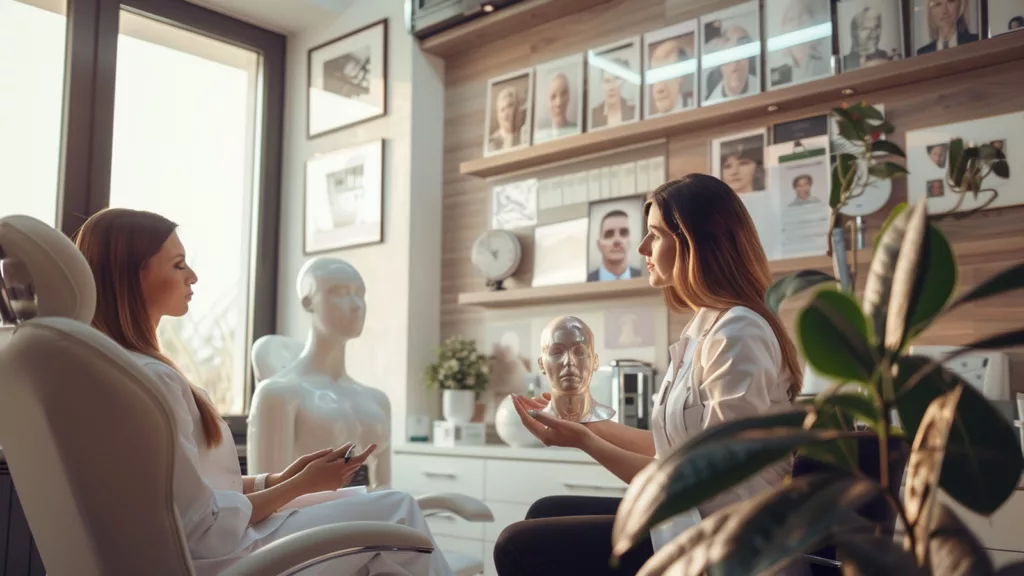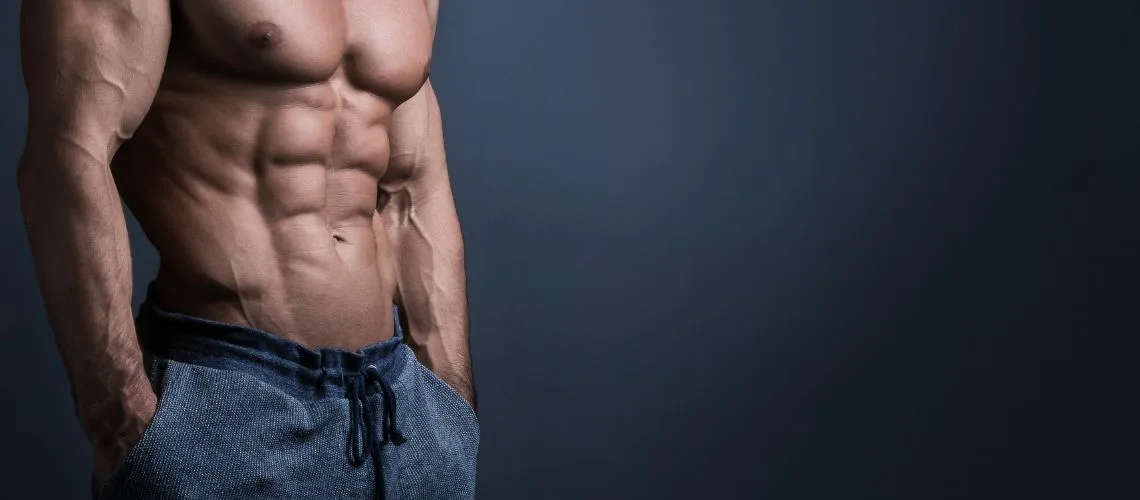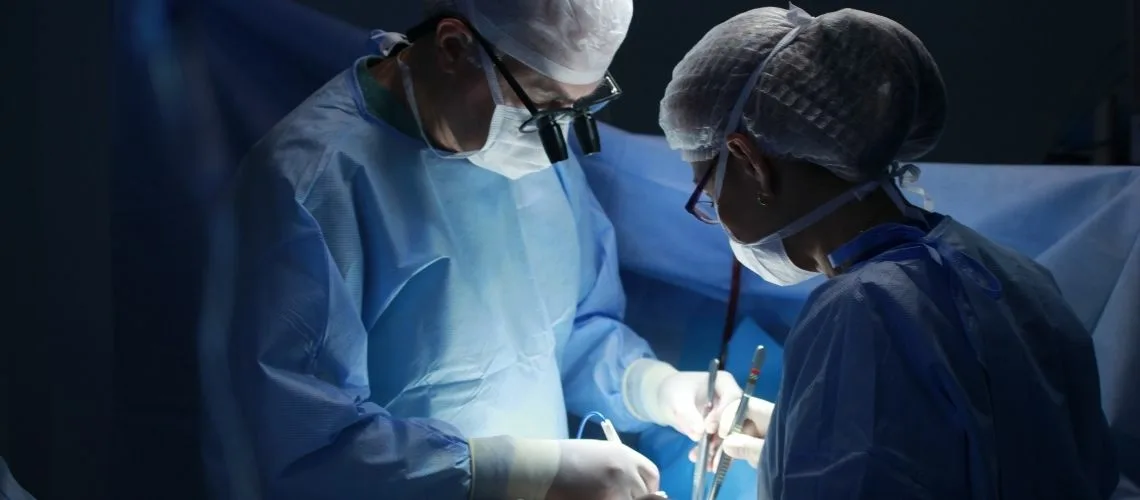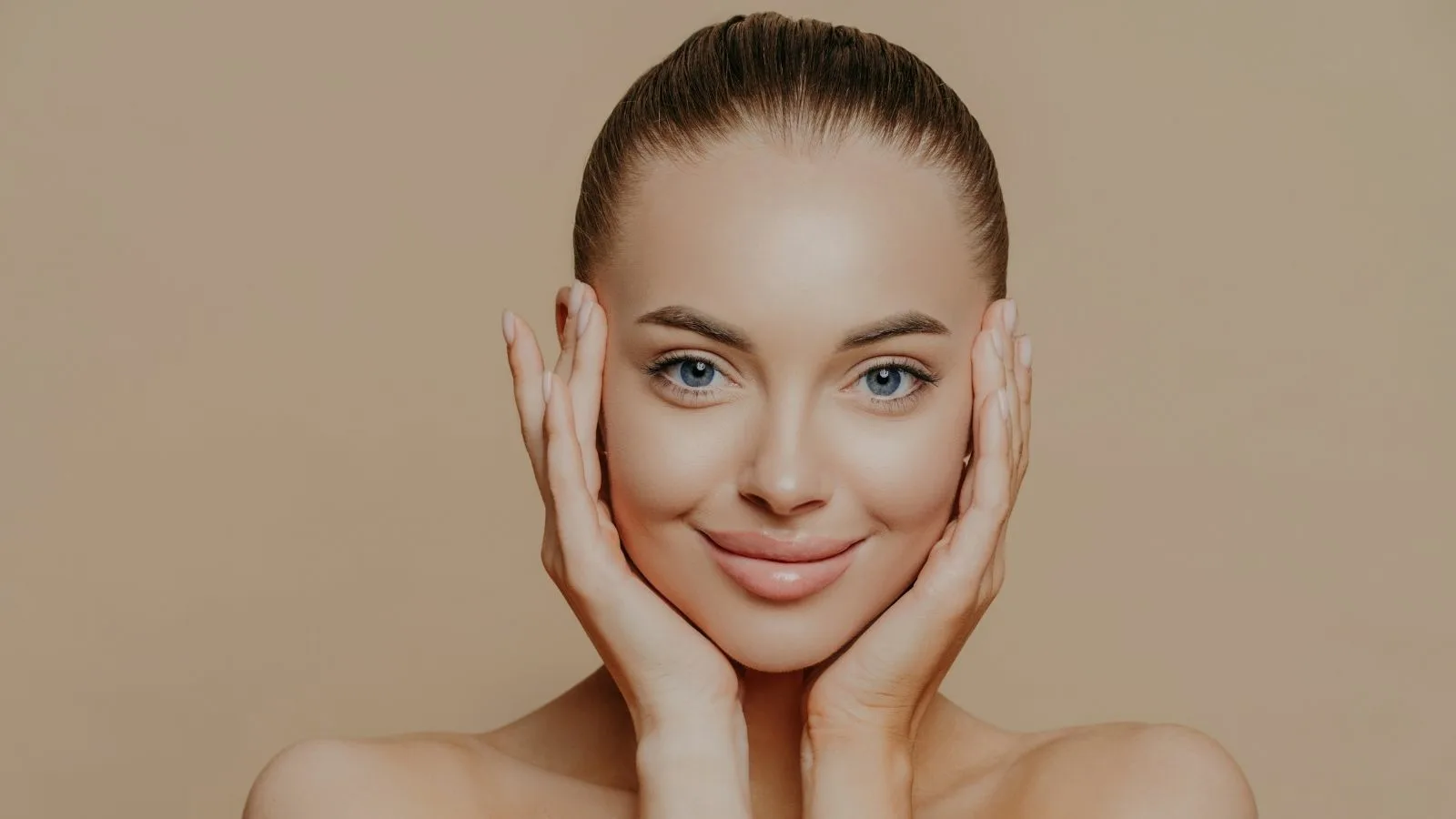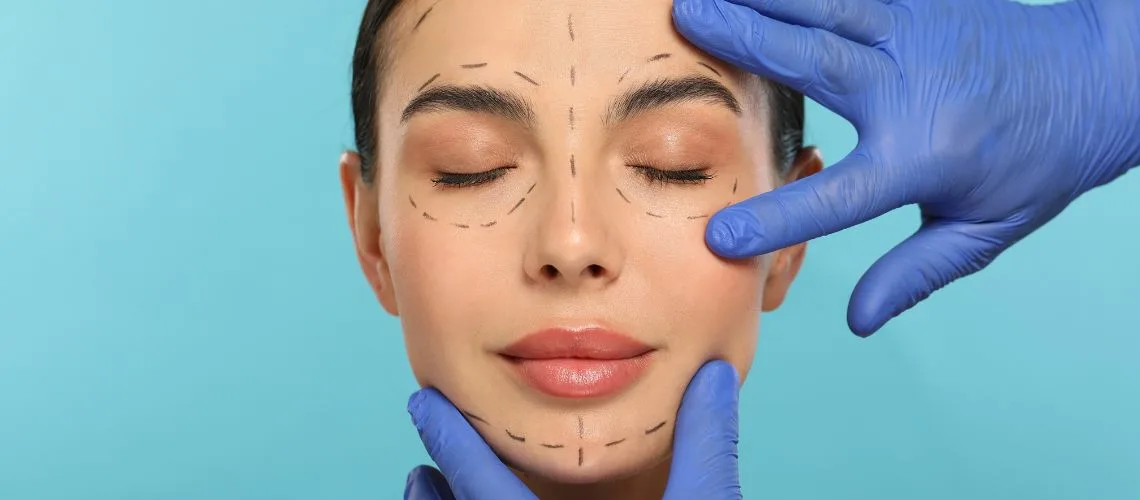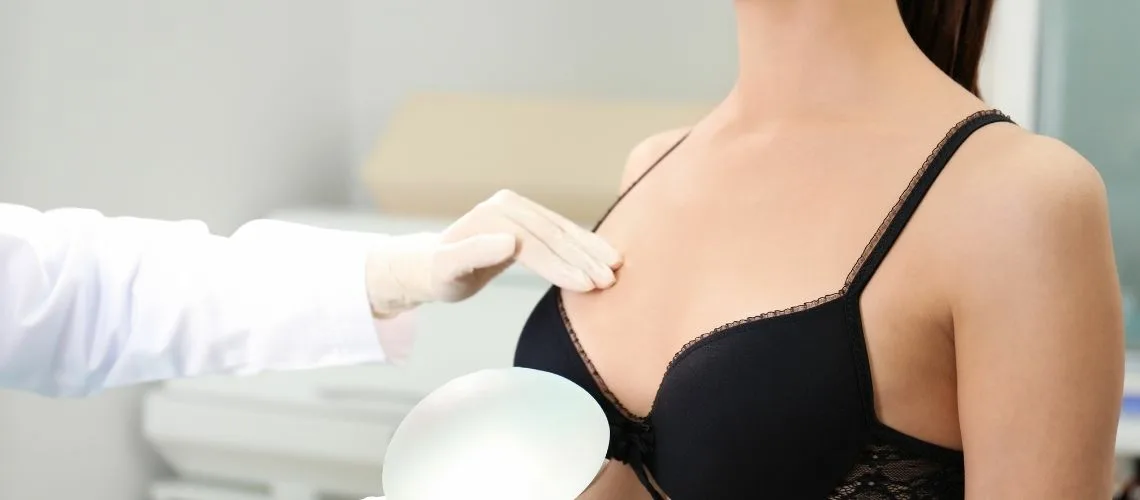Functional rhinoplasty focuses on improving nasal breathing by correcting structural problems such as septal deviation or valve collapse. Cosmetic rhinoplasty aims to enhance nasal appearance for facial harmony.
Key differences between functional and cosmetic rhinoplasty lie in goals and techniques. While one targets function and the other aesthetics, both can be combined in a single procedure.
Patients seeking functional rhinoplasty often experience chronic nasal obstruction. Correction provides both medical relief and quality-of-life improvement beyond appearance.
Cosmetic rhinoplasty addresses concerns such as hump removal, tip refinement, or nostril reshaping. Combined functional and aesthetic approaches deliver comprehensive nasal correction.
Functional and Cosmetic Rhinoplasty: What is the Difference?
Rhinoplasty is a surgical procedure to improve the shape or function of the nose. Today, many people undergo rhinoplasty for both aesthetic and functional reasons. There are some important differences between functional and cosmetic rhinoplasty. In this article, we will examine the differences between these two types of rhinoplasty and explain which type of rhinoplasty should be preferred in which cases.
What is Rhinoplasty?
Rhinoplasty is a surgical procedure performed to improve the aesthetic appearance of the nose or to correct nasal function. This procedure, which is quite common in the field of plastic and aesthetic surgery, can be performed to change the size, shape, or proportions of the nose. Rhinoplasty can also be performed for functional purposes, such as correcting congenital or accidental nasal deformities and solving breathing problems. Rhinoplasty has two main purposes, aesthetic and functional, and the procedures performed for these purposes vary.
Functional Rhinoplasty
Functional rhinoplasty is a surgical procedure designed to ensure the proper functioning of the intranasal structures. This type of rhinoplasty is usually preferred for the following reasons
- Breathing Problems: Breathing problems such as nasal congestion or a deviated septum.
- Congenital Anomalies: Congenital deformations in the structure of the nose.
- Post Traumatic Adjustments: Impairment of nasal function as a result of accidents or injuries.
Functional rhinoplasty is performed to improve the patient’s quality of life and is often covered by insurance. Surgical procedures include septoplasty (correction of the nasal septum), turbinoplasty (reduction of the nasal mucosa), and other procedures to open the airway.
Functional rhinoplasty is performed for health and comfort rather than aesthetic concerns. While these surgeries allow the patient to breathe more comfortably, they can also have a positive effect on aesthetic appearance.
Cosmetic Rhinoplasty
Cosmetic rhinoplasty is a surgical procedure to improve the aesthetic appearance of the nose. This type of rhinoplasty is usually preferred for the following reasons
- Correction of Nose Shape: Lifting or thinning the tip of the nose, correction of the nasal arch.
- Size and Proportion Adjustments: Making the nose more compatible with the face.
- Ensuring Symmetry: Correction of asymmetrical nose structure.
Cosmetic rhinoplasty is a procedure that is performed for aesthetic reasons and to make the patient feel better. These procedures can improve self-confidence and contribute to overall facial aesthetics.
Cosmetic rhinoplasty may include the following procedures:
- Rhinotiplasty: Reshaping the tip of the nose.
- Osteotomy: Reshaping of the nasal bones by cutting.
- Grafting: Use of cartilage or bone grafts.
The post-operative healing process usually takes a few weeks, and full results can be seen in a few months. Following the points to consider after surgery and the doctor’s recommendations will ensure a healthier healing process.
Key Differences Between Functional and Cosmetic Rhinoplasty
Understanding the differences between functional and cosmetic rhinoplasty can help you decide which type of surgery is best for you. Here are the key differences between these two types of rhinoplasty:
Goals and Objectives:
- Functional Rhinoplasty: Its purpose is to correct the functional problems of the nasal structure and to allow the patient to breathe more comfortably. Conditions such as breathing problems, congenital anomalies or deformities caused by trauma are the main reasons for this surgery.
- Cosmetic Rhinoplasty: Its purpose is to improve the aesthetic appearance of the nose. It is an operation performed with aesthetic concerns such as correcting the shape of the nose, adjusting its size and ensuring its symmetry.
Surgical Techniques:
- Functional Rhinoplasty: Usually includes procedures to open the airways, such as septoplasty (correction of the nasal septum) and turbinoplasty (reduction of nasal flesh).
- Cosmetic Rhinoplasty: Includes aesthetic procedures such as shaping the tip of the nose (rhinotiplasty), reshaping the nasal bones by cutting (osteotomy) and using cartilage or bone grafts.
Recovery Process:
- Functional Rhinoplasty: The recovery process may be shorter and more comfortable depending on the resolution of functional problems. Improvement of postoperative breathing can immediately improve the patient’s quality of life.
- Cosmetic Rhinoplasty: The healing process may be longer in aesthetic surgeries and it may take several months to see full results. Postoperative swelling and bruises may take time to heal.
Risks and Complications:
- Functional Rhinoplasty: In addition to general surgical risks, there may be complications such as incomplete correction of deviated septum or persistence of respiratory problems.
- Cosmetic Rhinoplasty: There may be complications such as not fully meeting aesthetic expectations, asymmetry or unwanted changes in nasal structure.
These key differences between functional and cosmetic rhinoplasty can help you decide which type of surgery is right for you. Both types of rhinoplasty can provide successful results when performed by a specialized surgeon.
Choosing the Right Surgeon
Because rhinoplasty is an aesthetically and functionally sensitive procedure, choosing the right surgeon is very important. Here are some important things to consider when choosing a surgeon:
Expertise and Experience:
- Education and Certificates: It is important to choose a surgeon who specializes in plastic surgery and has the necessary certificates. After graduating from Hacettepe University Faculty of Medicine, Dr. Erman Ak completed his specialty training in the Department of Plastic, Reconstructive and Aesthetic Surgery at Istanbul University Çapa Faculty of Medicine.
- Experience: The surgeon should have extensive experience in rhinoplasty. Dr. Erman Ak has performed many successful microsurgery, cleft lip and palate, congenital anomalies and jaw surgery operations.
Patient Reviews and Testimonials:
- Patient Testimonials: Reviewing the comments and experiences of patients who have previously undergone rhinoplasty surgery allows you to have information about the success of the surgeon and patient satisfaction.
- Sample Cases: Seeing before and after photos of the surgeon’s previous rhinoplasty operations is important to evaluate the surgeon’s skills.
Contact and Trust:
- Consultation Process: In your first consultation with your surgeon, you should be able to clearly express your needs and expectations. Dr. Erman Ak cares about his patients like his own family and makes a detailed evaluation to understand their needs and provide the best results.
- Trust: Having trust in your surgeon allows you to be comfortable in the pre- and post-operative processes. Dr. Erman Ak’s international achievements and training prove that he is a reliable surgeon.
Technology and Techniques:
- Modern Techniques: When the surgeon performs surgery using the latest technology and surgical techniques, you can achieve more successful and safe results. Dr. Erman Ak has mastered modern techniques with his advanced studies and microsurgery training at Villa Bella Clinic in Italy.
- Comprehensive Evaluation: Before the surgery, the surgeon evaluates your nose structure and facial proportions in detail and creates a personalized plan.
Choosing the right surgeon is critical to the success and satisfaction of your rhinoplasty. Dr. Erman Ak, with his extensive experience and patient-centered approach, can help you achieve the best results.
Preparation for Rhinoplasty
The preparation process before rhinoplasty is very important for the success of the surgery and a comfortable healing process. Here are the things to consider before rhinoplasty:
Pre-Inspection and Evaluation:
- Initial Consultation: The initial consultation with your surgeon before surgery is a critical step to determine your expectations and needs. Dr. Erman Ak conducts a detailed evaluation to understand the needs of his patients and achieve the best results.
- Medical History: You will need to inform your surgeon in detail about your health history, current conditions and medications you are taking. This information plays an important role in planning the surgery and assessing possible risks.
- Physical Examination: A detailed examination of the internal and external structure of your nose helps your surgeon to create the surgical plan. Dr. Erman Ak prepares a personalized surgery plan taking into account the general structure of your face and nose proportions.
Preoperative Preparations:
- Smoking and Alcohol: Reducing or completely quitting smoking and alcohol consumption before surgery positively affects your recovery process. Smoking can slow postoperative recovery and increase the risk of complications.
- Medication Use: Blood thinners and supplements (e.g. aspirin, ibuprofen, vitamin E) should be stopped before surgery. Your surgeon will inform you about which medications you should stop and when.
- Nutrition and Hydration: Eating a healthy diet and drinking enough water before surgery supports your overall health and postoperative recovery.
Operation Day:
- What You Should Have with You: On the day of surgery, wear comfortable clothes and take any personal items you may need with you. It is also important to arrange for a companion to take you home after surgery and help you for the first few days.
- Preoperative Instructions: Make sure you follow all instructions given by your surgeon before surgery. You may not need to eat or drink anything on the morning of the day of surgery; your surgeon will give you clear information about this.
Making these preparations before rhinoplasty is very important for the success of the surgery and for a smooth recovery.
Postoperative Care and Recovery
The care and recovery process after rhinoplasty is very important to achieve successful results and prevent complications. Here are some things to consider after surgery:
First Postoperative Days:
- Rest: Take care to rest for the first few days after surgery. Sleeping with your head elevated helps reduce swelling and bruising.
- Cold Compress: Applying a cold compress around the nose can reduce swelling and bruising. However, avoid putting pressure directly on the nose.
- Pain and Discomfort: It is normal to feel mild pain and discomfort. You can manage these discomforts by using painkillers prescribed by your doctor.
First Week:
- Bandage and splint: You may have a bandage and splint on your nose. These help to protect the structure of the nose and help the healing process to go smoothly. Your doctor will inform you when to remove them.
- Nose Cleaning: Be gentle when cleaning your nose and use the methods recommended by your doctor. Nasal sprays or saline solutions can be used to keep your nasal passages moist and clean.
- Activities: Avoid strenuous physical activity during the first week. Taking light walks can improve your circulation, but avoid heavy lifting and exercise.
First Month:
- Swelling and Bruises: Swelling and bruising usually subsides within a few weeks. However, full recovery and final results in the nasal area may take several months.
- Eyewear Use: If you need to wear glasses, you may need to use a special apparatus to avoid putting pressure on your nose. Contact lenses may be a better option during this period.
- Nutrition and Hydration: Eating a healthy diet and drinking plenty of water during the healing process will help your body to recover.
Long Term Care:
- Doctor Checks: Do not neglect postoperative doctor checks. Dr. Erman Ak can follow your healing process and make additional suggestions when necessary.
- Sun Protection: Protect your nose from direct sunlight. The sun can adversely affect your sensitive skin after surgery and cause color changes.
- Evaluation of Results: It usually takes six months to a year for the final results to appear after rhinoplasty. Be patient during this time and continue to follow your doctor’s instructions.
Paying attention to the care and recovery process after rhinoplasty surgery greatly affects the success of the surgery and the quality of the results you will achieve. With Dr. Erman Ak’s experience and guidance, you can manage this process in the best possible way.
Functional and cosmetic rhinoplasty are important surgical procedures performed to improve both the aesthetic appearance and functional structure of the nose. Functional rhinoplasty aims to correct health problems in the nasal structure and improve the patient’s quality of life, while cosmetic rhinoplasty is performed for aesthetic reasons and to enhance self-confidence.
In this article, we reviewed the main differences between functional and cosmetic rhinoplasty, the goals of both types of rhinoplasty, surgical techniques, and healing processes. We have emphasized the importance of choosing the right surgeon and the importance of pre- and post-operative care. Dr. Erman Ak, with his extensive experience and patient-oriented approach, can help you achieve successful results in rhinoplasty surgery.
You can contact Dr. Erman Ak for more information about rhinoplasty or to schedule a personal consultation. Remember, with the right information and guidance from an experienced surgeon, you can achieve the best results in your rhinoplasty surgery.
You can reach the contact page click here to contact Dr. Erman Ak and get more information about rhinoplasty. Our expert team is ready to provide you with the best service and answer your questions.
Frequently Asked Questions
Frequently asked questions and answers about rhinoplasty will help you learn more about this important surgical procedure.
What is rhinoplasty and who is it suitable for?
Rhinoplasty is a surgical procedure to improve the shape or function of the nose. It can be performed for aesthetic concerns or to solve health problems. It is suitable for people who have aesthetic discomfort in their nose or who have respiratory problems.
What is the difference between functional rhinoplasty and cosmetic rhinoplasty?
Functional rhinoplasty is performed to correct breathing problems, deviated septum or congenital nasal anomalies. Cosmetic rhinoplasty is performed to improve the aesthetic appearance of the nose.
How is rhinoplasty surgery performed?
Rhinoplasty surgery is usually performed under general anesthesia. The surgeon intervenes in the cartilage and bone structures to correct or reshape the structure of the nose. The duration of surgery can vary between 1-3 hours depending on the complexity of the procedure.
What is the recovery process after rhinoplasty surgery?
It is important to rest and keep your head elevated for the first few days after surgery. Swelling and bruising usually subsides within a few weeks. Full recovery and final results may take several months.
Is rhinoplasty surgery risky?
As with any surgical procedure, there are some risks in rhinoplasty surgery. There may be risks such as infection, bleeding, anesthesia reactions and unwanted results. Choosing an experienced surgeon helps to minimize these risks.
What should be considered after rhinoplasty surgery?
It is important to follow all the instructions given by your doctor after surgery. Avoid getting a blow to the nasal area, stay away from heavy physical activities and take care to eat a healthy diet during the healing process.
How much does rhinoplasty surgery cost?
The cost of rhinoplasty surgery may vary depending on the experience of the surgeon, the location of the hospital and the complexity of the procedure. You can contact Dr. Erman Ak for detailed information.
When can I return to work after rhinoplasty surgery?
Most patients can return to work within a week after surgery. However, the full healing process and swelling may take several weeks. If you have a physically active job, it is important to follow your doctor’s recommendations.
When can I see the final shape of my nose after rhinoplasty surgery?
The final shape of your nose appears when the postoperative swelling has completely subsided. This process usually takes between six months and a year. It is important to be patient and follow your doctor’s follow-up program.
Can rhinoplasty surgery be repeated?
In some cases, revision rhinoplasty may be necessary due to complications or failure to achieve the desired results. In this case, you can evaluate the situation with your surgeon and create the most appropriate treatment plan.
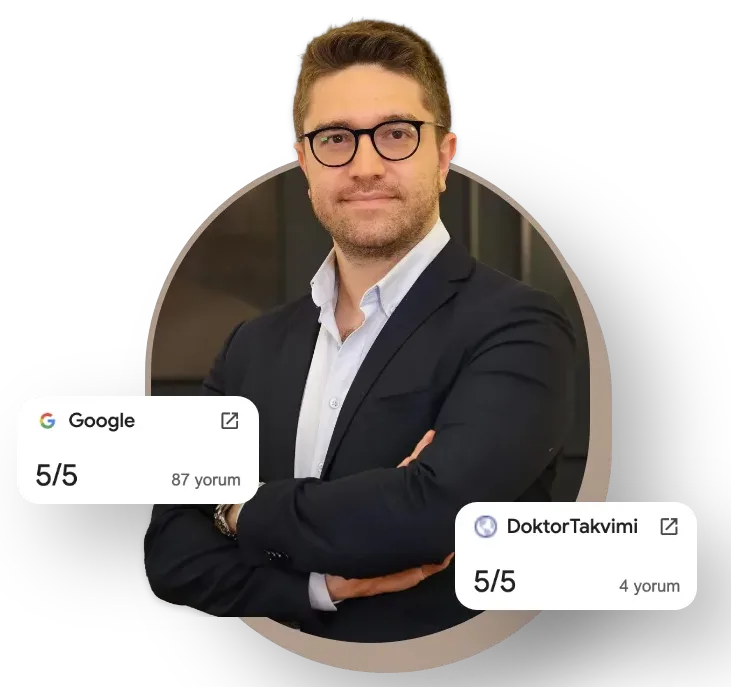
Op. Dr. Erman Ak is an internationally experienced specialist known for facial, breast, and body contouring surgeries in the field of aesthetic surgery. With his natural result–oriented surgical philosophy, modern techniques, and artistic vision, he is among the leading names in aesthetic surgery in Türkiye. A graduate of Hacettepe University Faculty of Medicine, Dr. Ak completed his residency at the Istanbul University Çapa Faculty of Medicine, Department of Plastic, Reconstructive and Aesthetic Surgery.
During his training, he received advanced microsurgery education from Prof. Dr. Fu Chan Wei at the Taiwan Chang Gung Memorial Hospital and was awarded the European Aesthetic Plastic Surgery Qualification by the European Board of Plastic Surgery (EBOPRAS). He also conducted advanced studies on facial and breast aesthetics as an ISAPS fellow at the Villa Bella Clinic (Italy) with Prof. Dr. Giovanni and Chiara Botti.
Op. Dr. Erman Ak approaches aesthetic surgery as a personalized art, tailoring each patient’s treatment according to facial proportions, skin structure, and natural aesthetic harmony. His expertise includes deep-plane face and neck lift, lip lift, buccal fat removal (bichectomy), breast augmentation and lifting, abdominoplasty, liposuction, BBL, and mommy makeover. He currently provides safe, natural, and holistic aesthetic treatments using modern techniques in his private clinic in Istanbul.

